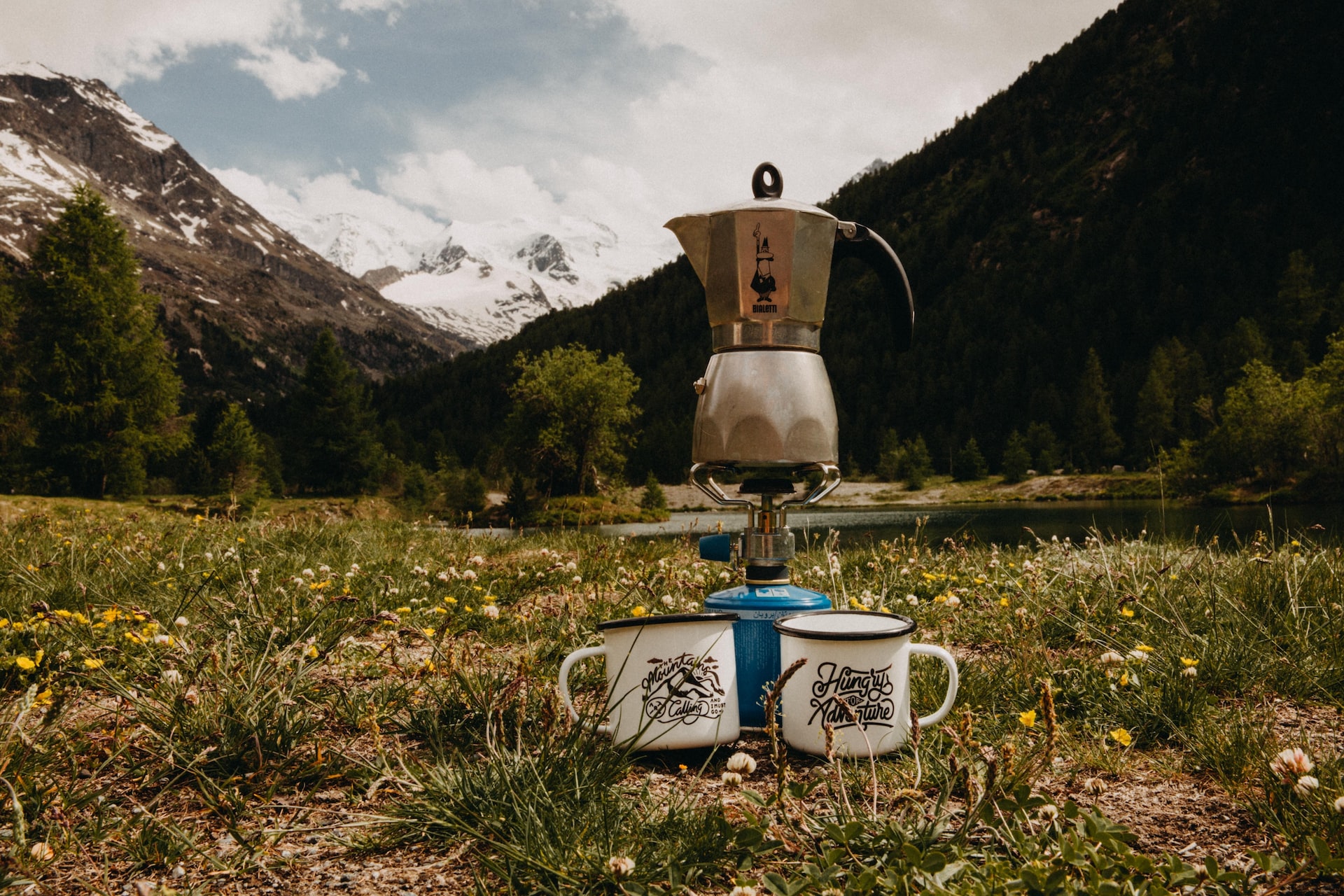
What Are The Different Types Of Camping Stoves?
Camping stoves are one of the most important pieces of equipment for a successful outdoor adventure. Imagine enjoying a hot cup of tea or a tasty meal amidst the beauty of nature. To make it easy for you to choose the right camping stove, we’ve divided them into two categories: lightweight and portable stoves for backpacking and basecamp stoves for setting up a more permanent campsite. With the right camping stove, you can create delicious meals and memories that will last a lifetime. So let’s take a closer look at these stoves and find the perfect one for your next outdoor adventure!
Backpacking stoves
Backpacking stoves are designed to be lightweight and compact, fitting easily into your backpack and leaving plenty of room for the rest of your equipment. In addition to being portable, backpacking stoves are also fuel-efficient, making it easy to carry just the right amount of fuel for your trip without weighing you down. These stoves come in a variety of types and are generally categorized by the type of fuel they use. The main types of backpacking stoves are canister stoves, liquid fuel stoves, and alternative fuel stoves.
Looking for a backpacking stove? Before you make a purchase, take a look at the best backpacking stoves out there! Our list includes options for any budget and different types.
Canister Camping Stoves
Canister camp stoves are usually very compact and easy to use. They use fuel from a prefilled canister that is connected via a fuel line or directly onto the stove. Canister stoves are suitable for beginners and we recommend getting one if you’re looking to buy your first backpacking stove. The downside is that these canisters can be hard to find in remote locations or internationally, and they’re not as environmentally friendly since they’re single-use canisters. If you’re buying your first backpacking stove, or you’re looking for maximum convenience, we recommend getting a canister stove. There are three main types of canister stoves. They are ultralight, integrated, and remote canister stoves.
Pros:
- Small and lightweight.
- Quick to light. Simply turn the valve and light it with a match, lighter, or piezo-igniter.
- Flame is easily adjustable (most models).
- Canister self-seals, so there are no spills and leaks.
- Some stoves have a built-in pressure regulator. This can improve cold weather and high-elevation performance.
Cons:
- Stove arms may not be long enough to hold large pots securely.
- It’s tough to know how much gas is left inside the closed canister. You may want to carry an extra one to be sure you don’t run out.
- Canisters may depressurize in cold weather and produce a weak flame unless the stove has a pressure regulator.
- The cost of fuel is greater when compared to liquid-fuel stoves.
- Not eco-friendly. Empty canisters need to be disposed of properly.
Ultralight Canister stoves
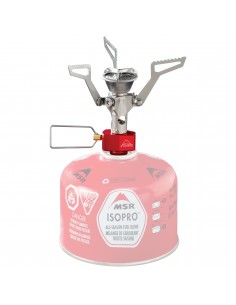
Ultralight stoves are the smallest and lightest. It’s just a tiny attachment that screws onto the top of the canister and provides a base on where you can balance your pot or pan to heat. Some of these stoves are incredibly small, fold up compactly, and weigh only a few ounces.
Integrated canister systems
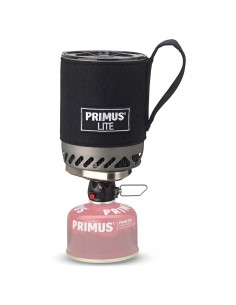
These tall-profile systems offer a combination of the canister, burner, and insulated cooking pot to create a cohesive system. The cooking pot has a lid with drain holes and a sip hole that connects seamlessly to the burner with a twist-on. The built-in windscreen makes the system more efficient when transferring heat. They can be used with accessories such as a French press for coffee making. The canister, pot, and stove all nest inside each other, which makes it easy to pack and takes less room in your backpack. However, compared to standard canister stoves, the integrated system is heavier and prone to tip-overs. For most beginner backpackers, an integrated canister stove is the most straightforward option.
Remote canister stoves
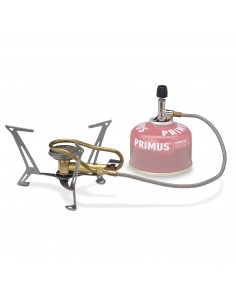
Remote canister stoves are similar to ultralight stoves, but they run a fuel line from the burner to the fuel canister. Some canisters can be used upside down to improve cold-weather performance and you can also use a windscreen to help the stove to heat more efficiently. These stoves may have wider support arms for large-pot stability. The fuel line and support arms might add a few more ounces compared to an ultralight stove.
Liquid fuel camping stoves
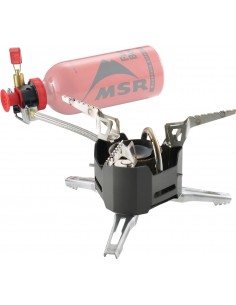
Liquid fuel stoves run mainly on white gas, which is the best camp stove fuel and is the cleanest burning. It’s possible to use other fuels like kerosene and even gasoline or diesel if nothing else is available. Fuel versatility and availability make liquid camp stoves a good idea for international or remote trips where access to canisters might be limited. The downside is that the stoves are more complicated to use. Most require priming to get them started. They also require periodic maintenance and replacement of some bits and pieces. These stoves are recommended for more experienced hikers and mountaineers.
Pros:
- Liquid-fuel stoves tend to be low-profile and offer greater stability on uneven ground.
- It’s easy to tell how much fuel you have left by peering into the fuel bottle.
- Fuel is cheaper and the tank is refillable.
- Perform better than other options at high altitudes and cold temperatures.
Cons:
- Needs priming and maintenance.
- Fuel spills are possible.
- Tend to be heavier than canister stoves.
- Multi-fuel stoves can cost a bit more.
- Fuels other than white gas have more impurities that may clog stove parts such as the fuel tube.
Alternative fuel Camping Stoves
Alternative fuel stoves don’t use liquid or gas. There are four main groups of alternative fuel stoves: alcohol, tablet, and wood stoves. These types of stoves are often used by experienced backpackers who wish to have the lightest gear possible, although they may be a bit more difficult to use than stove systems.
Alcohol-burning camping stoves
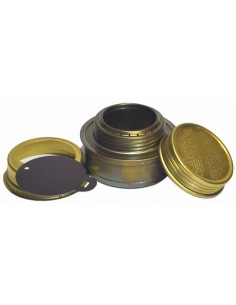
These are the smallest and lightest stoves on this list. They’re very simple, with no moving parts to break, they boil water quickly and the alcohol they burn is readily available. They are also very inexpensive and many choose to make their own out of aluminum soda cans or other cans and containers. Despite the benefits of alcohol stoves, they burn considerably slower than both liquid and canister stoves and they do take a little bit of practice to use safely. It’s easy to spill their fuel, leaving you without a heat source and with smelly gear.
Pros:
- Easy to use
- Very lightweight and compact
- Simple with no moving parts
- Inexpensive
- Very quiet
Cons:
- Slow cooking times
- Less efficient than other fuel types
- Poor performance in wind and cold weather
- No temperature control
- Hard to see the flame, and easy to spill fuel
- Can’t be used during most fire bans
Solid fuel-burning (Tablet) camping stoves
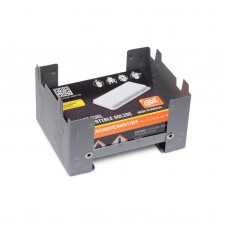
These stoves burn special fuel tablets that burn very hot and fast. Like alcohol stoves, tablet stoves are very lightweight, portable, and inexpensive. The downside is that the tablets emit a chemical odor when burning and may leave residue on the cookware. It’s not possible to control the heat level and you’ll need to get used to your stove. We recommend tablet stoves for experienced hikers. There are much better options available for beginners.
Pros:
- Easy to use
- Very lightweight and compact
- Inexpensive
- Very quiet
- No fuel spilling
Cons:
- Less efficient than other fuel types
- Slow cooking times
- Expensive fuel
- Poor performance in wind and cold weather
- No temperature control
- Burns with an unpleasant odor and leaves residue on the pot
- Can be tough to resupply fuel
- Can’t be used during most fire bans
Wood-burning camping stoves

Wood-burning stoves are designed to burn dead wood to heat your water and food. You can find some branches and scraps of wood close by and won’t have to carry fuel around. They burn much more efficiently than an open campfire while producing less smoke. Some models feature a USB charger which can be used to charge your electronics. There are a couple of obvious drawbacks. You’ll need to be camping somewhere without fire restrictions and with plenty of wood to burn. If it has been raining recently and you fail to light your fire, you’ll be without warm water and food.
Pros:
- Fuel is easy to find in forested areas
- Don’t have to buy and carry fuel around
- Renewable fuel resource
- Nostalgic & pleasant
Cons:
- Can’t be used during most fire bans
- Slow to use and not very efficient
- Poor performance in wet and cold weather
- Pots end up covered in black soot
- More time, effort & practice required
- Hard to find fuel when wet or above the treeline
Basecamp stoves
Basecamp stoves are larger and more powerful stoves designed for use at a campsite or in a backyard setting. Unlike backpacking stoves, which are designed to be lightweight and portable, basecamp stoves are designed for larger groups and longer cooking times.
Basecamp stoves are typically fueled by propane or other liquid fuels and can provide high heat output to cook larger quantities of food or for longer periods of time. These stoves come in a variety of types, including freestanding stoves, tabletop stoves, and even built-in stoves for outdoor kitchens.
One of the main benefits of basecamp stoves is their ability to provide a more traditional cooking experience in an outdoor setting. With a basecamp stove, you can cook just like you would on a stove in your home, making it a popular choice for group camping trips, backyard cookouts, and outdoor events.
Looking for a camping stove? Before you make a purchase, take a look at the best camping stoves out there! Our list includes options for any budget, from affordable to heavy-duty stoves perfect for cooking up a storm when you’re camping with a big group.
Tabletop stoves
A tabletop basecamp stove is a type of camping stove that is designed to be used on a table or other flat surfaces. Unlike traditional basecamp stoves, which are usually freestanding and can be quite large, tabletop stoves are more compact and portable. They are typically fueled by propane or butane gas and can be used to cook a variety of foods, including soups, stews, and grilled meats.
Tabletop basecamp stoves are a popular choice for camping trips, backyard cookouts, and other outdoor events. They are lightweight and easy to transport, making them an excellent choice for those who want to enjoy outdoor cooking without the hassle of setting up a traditional basecamp stove.
Tabletop basecamp stoves come in a variety of sizes and styles, ranging from small and simple models to larger, more complex stoves with multiple burners and other features. Some models may also include additional accessories like griddles, grills, and hot plates, making them even more versatile and useful for outdoor cooking.
Whether planning a weekend camping trip or hosting a backyard cookout with friends and family, a tabletop basecamp stove is an excellent choice for convenient and easy outdoor cooking. You can even use them indoors as an emergency stove in case of an electricity outage.
Freestanding stoves
A freestanding basecamp stove is a type of camping stove that is designed to be freestanding and can be quite large. They are typically fueled by propane, white gas, or other liquid fuels, and can be used to cook a variety of foods, including soups, stews, and grilled meats.
Unlike tabletop basecamp stoves, freestanding stoves require a level, stable surface for setup, such as a campsite or a sturdy table. They are generally more durable and heavy-duty than tabletop stoves and often include multiple burners, griddles, and other accessories to make outdoor cooking more efficient and convenient.
Freestanding basecamp stoves are often used for larger groups of people, such as families or groups of friends, as they are capable of cooking larger quantities of food. They are also a popular choice for longer camping trips or basecamps, where a more permanent cooking setup is required.
Overall, freestanding basecamp stoves are a reliable and versatile choice for outdoor cooking and are a great option for those who want to enjoy delicious, home-cooked meals in the great outdoors.
Conclusion
By now you know what kinds of stoves are available for hikers who are looking for lightweight stoves. There are additional types of camping stoves that are more bulky, heavy, and better suited for basecamps where they will be close to a vehicle since they’re much more difficult to assemble and relocate. To summarize our suggestions, we would recommend canister stoves for new hikers who are buying their first stoves. Experienced hikers might have already developed their favorite kind of stoves but we would advise you to try out some alternatives, such as liquid fuel or solid fuel stoves.